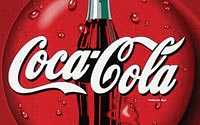 There are a couple of things that make a brand great: engendering good feelings to consumers and using those feelings to inspire them to make a
purchase.
There are a couple of things that make a brand great: engendering good feelings to consumers and using those feelings to inspire them to make a
purchase.
According to Harris Interactive’s most recent massive EquiTrend Study (which measures the equity of more than 1,500 brands across just about every possible category)
nearly every top scorer shared those two commonalities: that people had good feelings toward them and they encouraged people to take an action toward purchase.
“They have to be
perceived as a brand people trust or are predisposed to take an action. They have to feel positive and want to purchase that product,” Robert Fronk, executive vice president and practice lead
for corporate reputation at Harris, tells Marketing Daily. “There are many brands who are frequently seen, but don’t get that action.”
advertisement
advertisement
Among the category leaders, many are
not surprising. Southwest Airlines in the “Value Airline” category, for instance. Or Honda among automotive manufacturers. Or Coca-Cola among soft drinks. There are a few, however, that
thanks to a third factor (familiarity) doesn’t get weighted as heavily, but carries a lot of power behind it. Kayak.com, for instance, scores well in the travel category, despite being not
nearly as well-known as an Expedia or Travelocity (or even Orbitz). In the health-oriented not-for-profit category, Stand Up 2 Cancer, scored so well among despite a relatively low familiarity, that
it managed to top the category, Fronk says.
Among all of the brands rated, Harris was also able to name 15 brands as those with “staying power,” meaning they had topped their
respective categories for the past eight years. Among those brands are: Blue Cross Blue Shield, Coca-Cola, Craftsman, Gatorade, Hallmark Greeting Cards, HBO, Holiday Inn, Life Savers, National
Geographic Magazine, Oreos, Sony, Southwest Airlines, Subway, Verizon Wireless and Visa. All of those companies, Fronk says, have done admirable jobs managing their brand reputations and
images.
“All of those brands, which are very familiar, are not what you’d call edgy in their categories,” he says. “These brands all share that [feeling that] if
you’re seen with the wrapper or the packaging, you’d never be embarrassed.”
However, there are some brands that have had a harder time maintaining their dominance,
particularly as consumer voices have risen in social media and elsewhere. The Susan G. Komen Foundation, Fronk says, would have been the 16th member of the “staying power” list,
but it’s reputation has been damaged from its highly publicized funding decisions, as well as defections of local market leaders. Similarly, BlackBerry suffered a huge drop in its categories as
more companies have begun, “Bring Your Own Device,” strategies, which are allowing employees to bring other smartphones in for corporate work.
Finally, there are other brands that
may not have managed to hit the eight-year mark of leading their categories, and will continue to grow. Among them: Google, Android, Amazon’s Kindle and Apple’s iPhone and iPad. Of the
latter, while it may be surprising the company has not landed at the top of the “staying power” list, there is a small, but strong audience of people who won’t ever go for the brand,
Fronk says.
“As a brand, it’s still a bit polarizing,” Fronk says. “There is a non-Apple audience. They are a brand that has no in-betweens.”